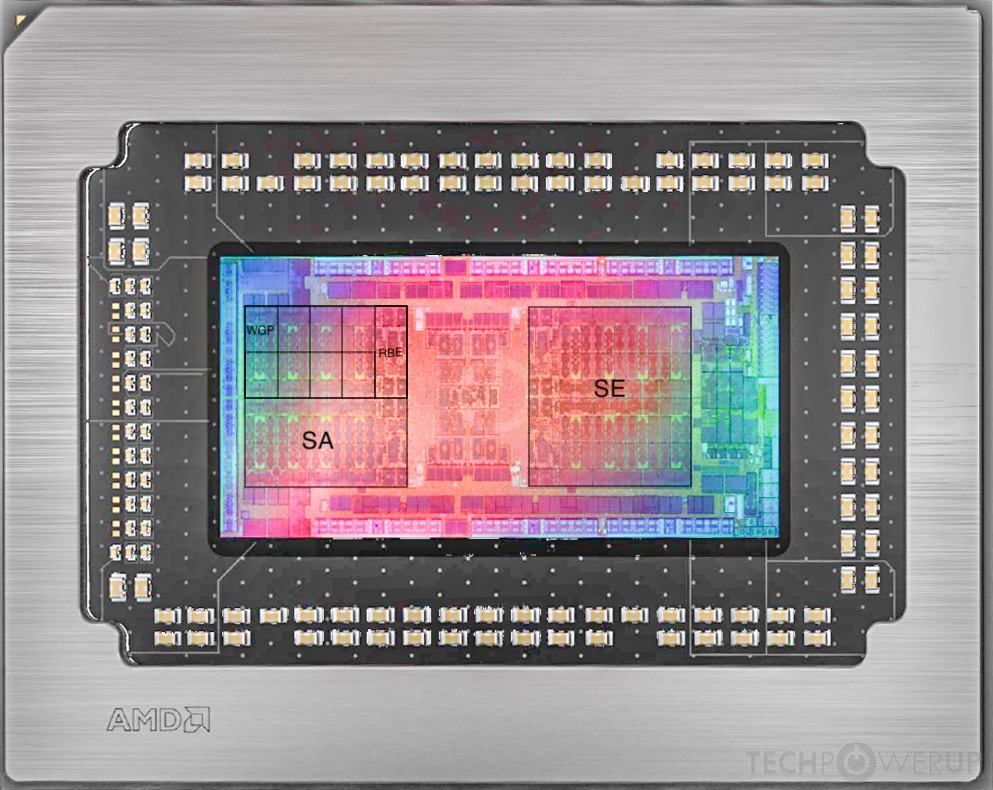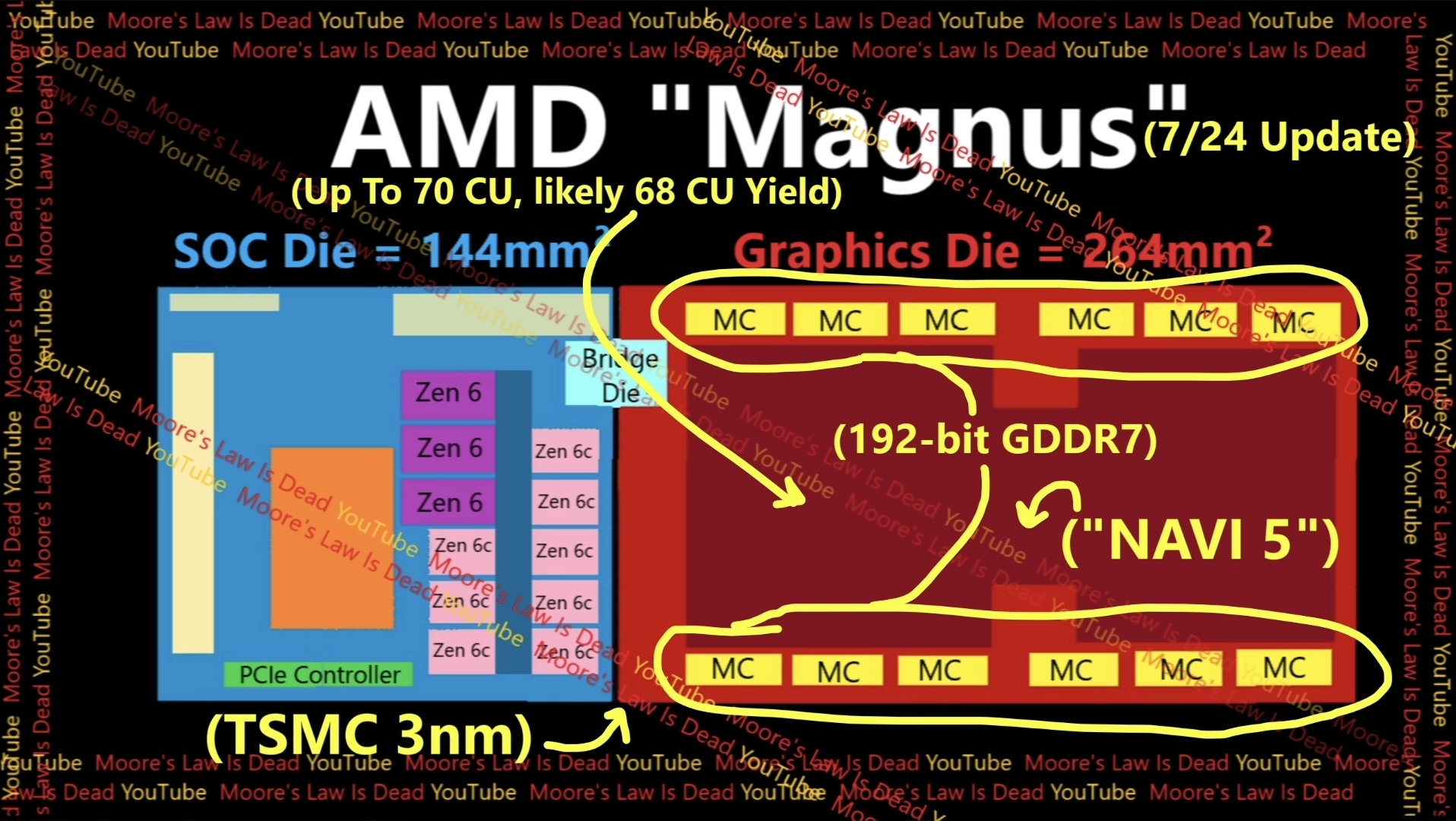Moore law is dead, any console more powerful will cost more and will not get cheaper overtime
More expensive means less public willing or capable of buy which in turn means more risk to publishers to launch games only on the console
So the question remains, if they launch a console called PS6 and all or almost all the games continue to be made and launched for and on the ps5 is this truly a PS6 or is just a PS5 Pro 2?
That's less a problem of Moore's Law, more one of Dennard Scaling these days.
That's a good point you've raised, I'm curious what the narrative and discourse will be going into "next-gen", and surrounding these consoles. Sony will likely. and based on past history go down an efficient route, like they did with PS5's "fast and narrow design", relatively less CU's but a faster clocked GPU or Xbox's slower but wider approach, more CU's but clocked relatively slower.
If we assume Magnus is Xbox's next chip, then it's likely they'll be sticking with the same design philosophy, but this time ensuring there's a clear advantage in performance compared to the competing PS6. Personally I welcome it, but I'm curious how the market will react to a product will likely could be priced $1000 +
What might also complicate things is the ML technology, PS5 Pro using PSSR, and will soon incorporate into it FSR 4, I'm wondering if Microsoft will also adopt FSR 4 and how this may complicate things considering Project Amethyst. I'm wondering if Microsoft may develop their own ML based upscaling technology.
It really just comes down to the value proposition MS can offer. Exclusives 100% won't be a part of that, since they release their games everywhere now. Price won't be it, at least not with any Xbox device using this Magnus APU.
At the end of the day it has to still deliver the convenience & usability of an Xbox console environment, but some of the more obvious openness & modularity of PC & Windows, in a way where they don't conflict with each other.
Considering that PS6 is releasing in 2027+, I don't see how they can guarantee a substantial power difference when PS6 will be on n2p and the Series X2 will be on n3p. It's a 40% density gap. That's not their goal because it's not going to be a realistic goal. Their goal is to be the best gaming PC one can get in a console like hardware / form factor (i.e. APU + soldiered GDDR7 main memory) that can rival RTX 5080 / 4090 performance in 2026. By 2028/2029, they'll have a successor that will trounce the PS6 handily.
Hypothetical PS6 in 2027 will have
8-10 core Zen 6
24GB GDDR7 on 256 bit bus (896GB/s bandwidth)
64-128mb Infinity Cache
68/72 Cus at 3.5 ghz (up to ~61 teraflops)
whichever forward UDNA 2/3 features Cerny decides to incorporate due to Project Amethyst.
~300mm2 die size
$599-$699 (Most likely $699)
such a PS6 will likely perform as well if not better with optimized console SKUs of games.
Yeah those are pretty realistic PS6 specs, and the thing with MS's approach is they can justify 3-year iterations across APU packages if they want, so a high-end device in 2029 outperforming PS6 would be expected.
But that type of device is also going to cost a lot more, for obvious reasons.
Hello
Why would you assume the Xbox consoles won't have optimized SKUs?
SIE's SDK and APIs have generally been better than Microsoft's for over a decade now. This gen it got so bad with Xbox that "the toolz" became a meme.
Basically, PlayStation APIs are more tuned and focused on game development, while the DX12U APIs are more focused on providing a huge gamut of solutions for general 3D pipelines that can include (but aren't limited to) gaming. However, the degree of choice with implementations you can roll with in DX12U actually can be time-wasting for engines if they need to plug through a crap ton of things to find the one solution that works well with them.
That type of redundancy isn't really a thing with PlayStation APIs, AFAIK, so for game dev they tend to be better. Plus SIE have groups like XDEV, which grew from the ICE teams, which were specifically made to help come up with solutions for game dev on PlayStation platforms like PS3 and onward.
That's disappointing NGL. Sony and MS have always being within one year after volume production of a node since Xb1/PS4 gen.
I'm guessing the AI boom is affecting availability of advanced nodes.
Well, someone on IconERA pointed out the
Rapidus fab in Japan having recently developed a 2nm chip, and from what I read that fab is being developed to help companies (including Sony, who have a big investment in its development) to be less reliant on TSMC for wafers.
It's a good call, and if the fab can get large enough scale in the next few years there's a decent chance SIE & Sony will use its 2nm for PS6. But it's nothing locked in stone ATM, and could very well not happen. Tho, it's just nice to see another promising fab come up that could become a viable alternative, after Global Foundries basically fell behind (and even Samsung, for the smaller nodes, more recently).





